EOS 5D
v
EOS 5D Mark II
PART 6 - Noise continued
By ISO 6400, whilst the Mark II JPEG is starting to look pretty mushy, blotchy and useless and the RAW with no noise reduction is looking colourful for all the wrong reasons, a bit of kneading with Neat Image is still able to produce a better sample than the 5D at ISO 100:
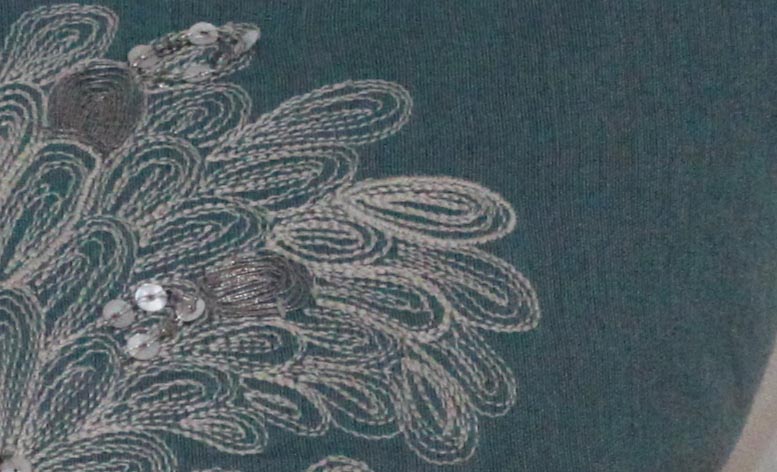
Above, Mark II, ISO 6400 (1/30th f8) JPEG. Below, same file, RAW, no noise reduction.
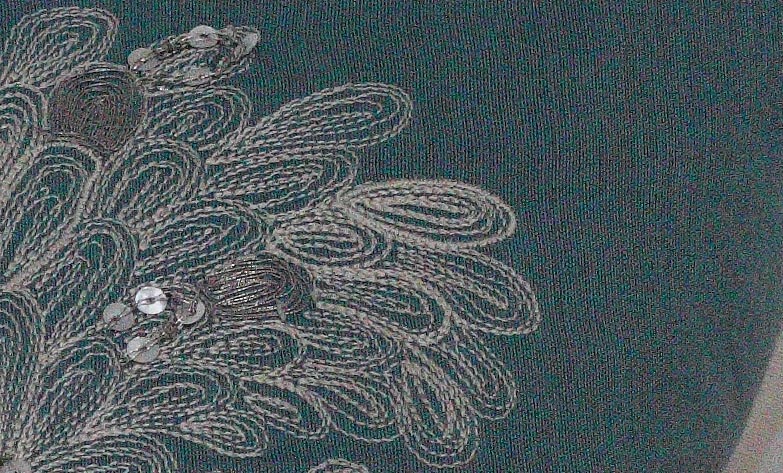
Below, same file, noise reduction by Neat Image. Note reduction in colour saturation but detail in weave still good.
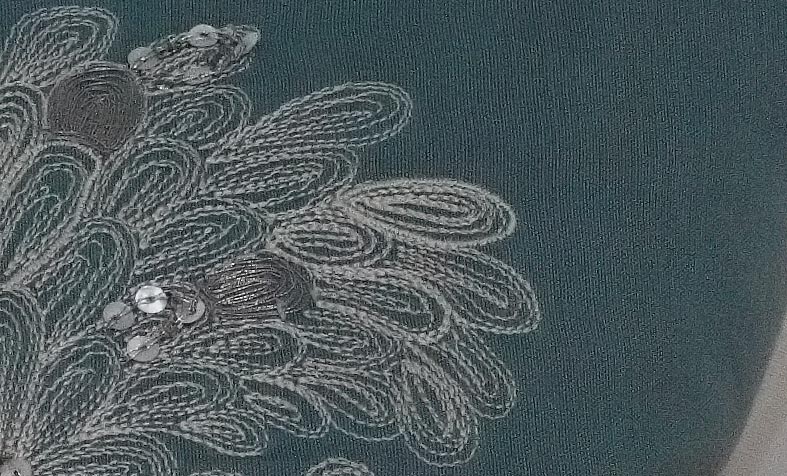
My conclusion at this stage is that I will try to avoid ISO 6400 but it is by no means a total dead loss. However I have not enabled the "extended" ISO through the custom function, as I can't imagine 12800 and 25600 being any use in the real world. For one thing it would be getting too dark to focus! My other conclusion is that processing makes such a huge difference it is pretty much impossible to scientifically and fairly compare the original 5D and Mark II. It may be that with the right combination of RAW converter and noise reduction software any particular image from one camera can be made to look as good as the equivalent from the other. It would take a lifetime to try all the RAW converters at all the settings, which is why Ken Rockwell initially restricted his testing to JPEGs. But that doesn't tell those of us who are prepared to spend time fiddling around with RAW files what we need to know. So back to the real world we go.
Real World High ISO testing
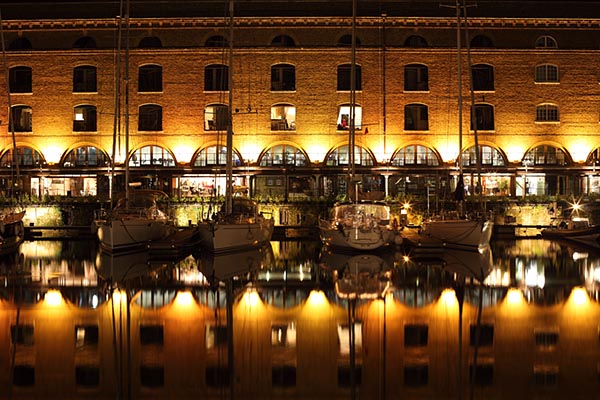
Above 5D II, ISO 100 (5 seconds f8)
Below 5D II, ISO 1600 (1/4 second f8)
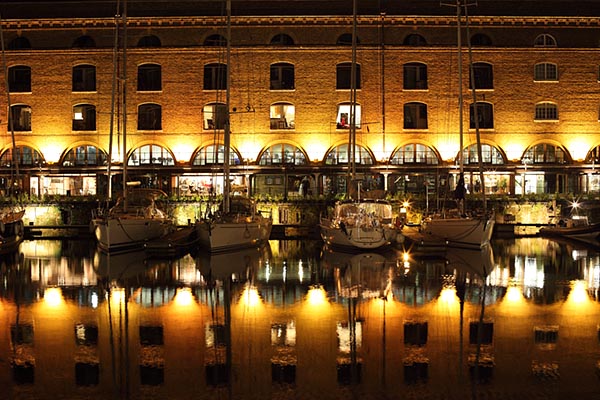
Just because the camera is on a tripod doesn't mean you can always avoid high ISOs. These two images are noticeably different. The 5 second exposure at ISO 100 has a creamy smooth reflection, but the boats have moved during the exposure. The 1/4 second exposure at ISO 1600 freezes the boats and it is a matter of taste whether the reflection looks better or worse. I am not sure which image I prefer, but noise should not even be part of the equation. Whilst the ISO 100 image is clearly better, noise in the shadows is still visible. Without processing, the shadow noise in the ISO 1600 image is clearly visible, but can be easily reduced to an irrelevance with Neat Image.
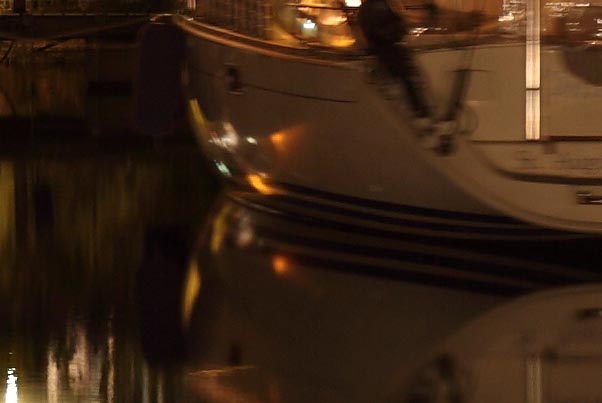
Above - 100% crop from ISO 100 image
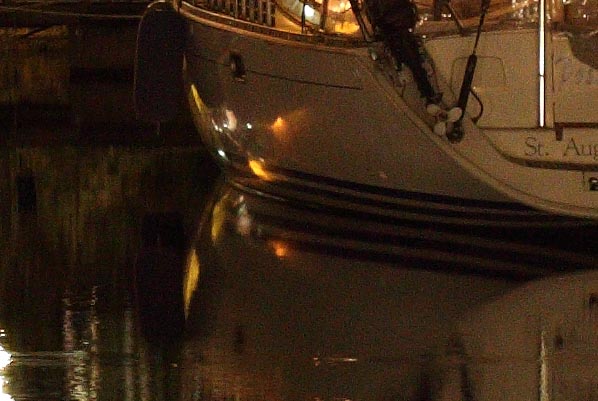
Above - 100% crop from ISO 1600 image, RAW, no NR
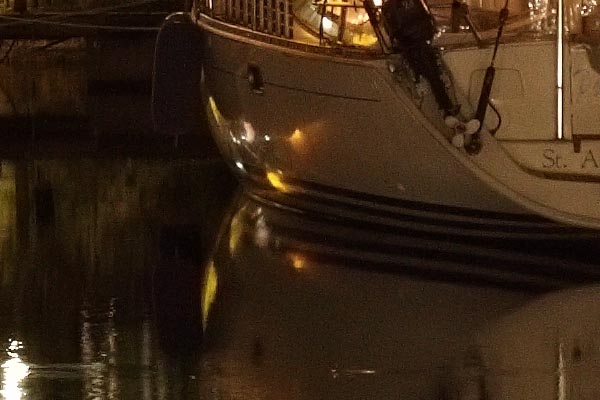
Above - 100% crop from ISO 1600 image, RAW, Neat Image applied
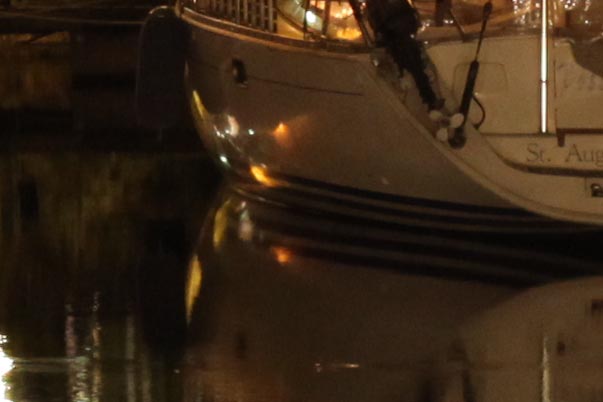
Above - 100% crop from ISO 1600 image, JPEG, no post-processing
What this series of images shows is that the JPEG straight out of the camera at ISO 1600 looks nice and smooth and the boat is frozen sharp, avoiding the motion blur of the 5 second exposure. The honest RAW file with NR turned off shows the reality behind the JPEG, which has smoothed over the noise. With appropriate processing a very sharp result with a "film-like" look and no intrusive noise can easily be achieved.
Part 7 - More real world noise tests